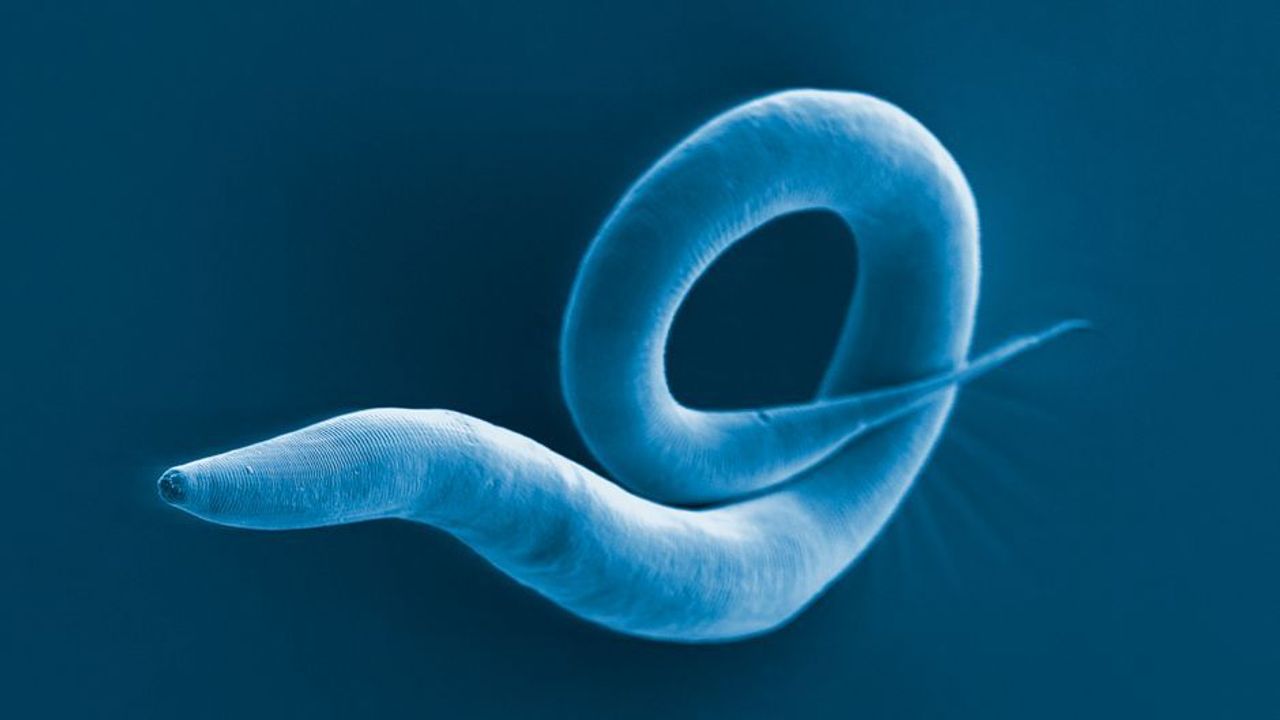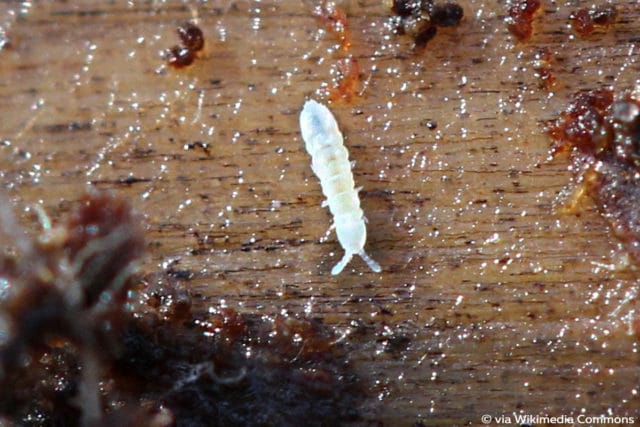Fadenwürmer In Der Erde Bekämpfen
Earthworms, A Threat To Canada’S Boreal Forest?
By Nathalie Chaperon, Communication Advisor — Scientific Communication TeamSome children really like to play with earthworms, while many adults do not, although gardeners appreciate them and fishermen rely on them. “Most earthworms disappeared from North America during the last ice age more than ten thousand years ago,” explains Dr. Jérôme Laganière, researcher at the Laurentian Forestry Center (LFC) of Natural Resources Canada. . "They reappeared in the 18th century with the installation of European settlers, probably transported with the soil of tomato plants."
Jérôme is one of the three authors of an important research article recently published in Geoderma, a scientific journal specializing in soil sciences. On the left, a plot of land without earthworms, we can see a thick organic layer (humus) distinct from the mineral soil. On the right, soil invaded by earthworms, we can see a less well-defined organic layer mixed with mineral soil. In several regions of Quebec, on the other hand, the soils have a lower pH and are therefore more acidic, so, in theory, Quebec soils should be less hospitable to earthworms. “Our study shows that earthworms are spreading north in the boreal forest,” says Jérôme. Earthworms are voracious, attacking the organic part of the soil called humus, which is made up of moss, leaves, tree debris and other organic matter. Therefore, by consuming this material, the earthworms actually destroy a carbon reservoir and release carbon dioxide (CO 2 ) into the atmosphere, which contributes to climate change. Due to the relatively recent appearance of European earthworms in the boreal forest, the long-term impacts of disturbance on these communities are unknown. We know that earthworms are useful in many other ways — among other things, they help release nitrogen and phosphorus, two minerals needed by trees and plants. “Earthworms are now present in northern Quebec near isolated lakes, probably brought by fishermen,” explains Jérôme. So we need to get to the root of the problem by asking anglers to bring their unused bait home with them.
But for now, the potential problem remains: Although they seem harmless, earthworms could accelerate climate change. And a second wave of earthworm invasion is already predicted, this time from Asia, with larger, more voracious and even more active earthworms - they have even earned the nickname "jumping worms".
Yet this recent research allows us to start taking action now.
Earthworms’ Role In The Ecosystem
Earthworms influence (and benefit) the soil ecosystem in several ways:Recycling organic matter: Earthworms, along with bacteria and fungi, break down organic matter. Most people are familiar with earthworms and compost, but earthworms do the same in pasture soils, break down dung and plant litter and process 2-20 tons of organic matter per hectare each year, and recycle leaf litter under orchards and other forest areas. Most people are familiar with earthworms and compost, but earthworms do the same in pasture soils, break down dung and plant litter and process 2-20 tons of organic matter per hectare each year, and recycle leaf litter under orchards and other forest areas. Nutrients like phosphorus and nitrogen become more readily available to plants after being digested by earthworms and excreted in earthworm casts. Scientists have measured up to five times the availability of nitrogen in earthworm castings compared to undigested soil. Earthworms also absorb nutrients through the soil profile, bringing them closer to plant roots. Nutrients like phosphorus and nitrogen become more readily available to plants after being digested by earthworms and excreted in earthworm casts. Scientists have measured up to five times the availability of nitrogen in earthworm castings compared to undigested soil. Earthworms also absorb nutrients through the soil profile, bringing them closer to plant roots. They open small spaces, called pores, in the soil. When earthworms are introduced into soils that lack them, their burial can cause water infiltration rates to increase by up to 10 times the initial amount. Burying also improves soil aeration (important for plants and other soil-dwelling organisms) and improves plant root penetration. They open small spaces, called pores, in the soil. When earthworms are introduced into soils that lack them, their burial can cause water infiltration rates to increase by up to 10 times the initial amount. Burying also improves soil aeration (important for plants and other soil-dwelling organisms) and improves plant root penetration. Earthworms remove surface thatch material which can prevent water from entering the soil, as the thatch can cause it to sink (along with soluble nutrients). Earthworms remove surface thatch material which can prevent water from entering the soil, as the thatch can cause it to sink (along with soluble nutrients).
How Earthworms Can Help Your Soil
Their digestive system concentrates organic and mineral constituents in the food they eat, so their mussels are richer in available nutrients than the soil around them. Tunnels also allow roots to penetrate deeper into the soil, where they can reach extra moisture and nutrients. Their digestive system concentrates organic and mineral constituents in the food they eat, so their mussels are richer in available nutrients than the soil around them. Tunnels also allow roots to penetrate deeper into the soil, where they can reach extra moisture and nutrients. Soils with earthworms drain up to 10 times faster than soils without earthworms. In no-till soils, where worm populations are high, water infiltration can be up to 6 times greater than in cultivated soils. Soils with earthworms drain up to 10 times faster than soils without earthworms. In no-till soils, where worm populations are high, water infiltration can be up to 6 times greater than in cultivated soils. Research has shown that earthworms that leave their casts on the soil surface replenish topsoil. Research has shown that earthworms that leave their casts on the soil surface replenish topsoil. Earthworms need a continuous supply of calcium, so they are absent from soils poor in this element. Earthworms need a continuous supply of calcium, so they are absent from soils poor in this element. They are the main mixing agents of dead surface litter with the soil, making the litter more accessible to decomposition by soil microorganisms. They are the main mixing agents of dead surface litter with the soil, making the litter more accessible to decomposition by soil microorganisms. Researchers have found that orchards sprayed with claret or other copper sprays contain few earthworms and have peaty surface mats and poor soil structure. Researchers have found that orchards sprayed with claret or other copper sprays contain few earthworms and have peaty surface mats and poor soil structure. The researchers found that after four years, the no-till paddocks had twice as many worms as the cultivated soils. The researchers found that after four years, the no-till paddocks had twice as many worms as the cultivated soils.# Video | Fadenwürmer In Der Erde Bekämpfen
- Kill Roundworms In Soil
- Roundworm In Humans
- Does Vinegar Kill Roundworm Eggs
- How Long Can Roundworms Live In Soil
- How To Get Rid Of Hookworms In Humans
# Images | Fadenwürmer In Der Erde Bekämpfen - How Long Can Roundworms Live In Soil
Earthworms’ role in the ecosystem - Roundworm In Humans
 Save
Save
Will Bleach Kill Hookworms In Soil - Kill Roundworms In Soil
 Save
Save
Reference:
https://matiusyuger.blogspot.com/2022/11/good-haircuts-for-long-straight-hair.html